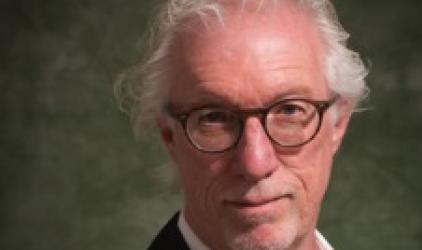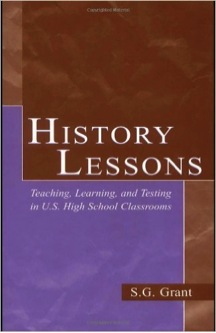Big Ideas and Ambitious Teaching (S. G. Grant)

Cursed with a short attention span, I was fortunate to land in a career that has allowed me to follow my academic’s nose. That nose has led me into the varied worlds of educational policy, standards, curriculum, and assessment, but always with a sense that it was teachers’ classroom practices that mattered most.
Apart from a brief flirtation with literacy and mathematics policy and practice, my work has been broadly defined by the field of social studies. My particular focus has always been in history, but my interests in policy, curriculum, and the like have meant that I needed to look beyond that single discipline.
Over much of the last 20 years, I have researched and written about history teachers’ views of and their classroom practices around state-level standards and high-stakes tests. That work allowed me to spend time with teachers and their students, to look deeply into the twin acts of teaching and learning, and to explore the many ways that teachers construct their classroom pedagogies in an era of increased accountability.
 In the first book that came from that work, History Lessons: Teaching, Learning, and Testing in U.S. High School Classrooms (Lawrence Erlbaum Associates, 2003), I examined the cases of two high school history teachers against the backdrop of the wider scholarly literature on teaching, learning, and testing. My initial impulse was to frame the book around Lee Shulman’s notion of pedagogical content knowledge. And I might have done so if I had focused only on teaching and learning history. However, I was equally interested in looking at the teachers’ responses to state-level testing. Shulman’s construct resonated with me, but something seemed to be missing.
In the first book that came from that work, History Lessons: Teaching, Learning, and Testing in U.S. High School Classrooms (Lawrence Erlbaum Associates, 2003), I examined the cases of two high school history teachers against the backdrop of the wider scholarly literature on teaching, learning, and testing. My initial impulse was to frame the book around Lee Shulman’s notion of pedagogical content knowledge. And I might have done so if I had focused only on teaching and learning history. However, I was equally interested in looking at the teachers’ responses to state-level testing. Shulman’s construct resonated with me, but something seemed to be missing.
That missing something was the idea that teaching always occurs in a particular context. Many factors can influence a teaching context, but not all support teachers’ best efforts. Interested in capturing the interaction among teaching, learning, and context, I developed the construct of ambitious teaching. My definition of that idea focused on the degree to which teachers a) know their subject matter well and see within it the potential to enrich their students’ lives; b) know their students well, which includes understanding the kinds of lives their students lead, how these youngsters think about and perceive the world, and that they are far more capable than they and most others believe them to be; and c) know how to create the necessary space for themselves and their students in environments in which others (e.g., administrators, other teachers) may not appreciate either of their efforts.
In talking with colleagues about the History Lessons book, the conversation inevitably turned to the need for more exemplars of ambitious teachers. The edited volume that resulted, Teaching History with Big Ideas: Cases of Ambitious Teachers (Rowman and Littlefield, 2010), allowed my co-editor Jill Gradwell and me to employ another construct I had been writing about for some time—big idea questions. A big idea question (e.g., Was the American Revolution revolutionary?) frames an instructional unit in ways that reflect both intellectual and student relevance in equal measures. The teacher-written chapters describe the authors’ assumptions about and the interplay among teaching, learning, and context. In the cross-case analysis chapter, Jill and I identified patterns across the teachers’ responses to the challenges they confronted in ways that allowed us to amplify the notion of ambitious teaching.
I am proud of this work but, about a year ago, I had the chance to see it take root in teachers’ classrooms. Because of my work on the College, Career, and Civic Life (C3) Framework for Social Studies State Standards, I was asked to lead a curriculum development project (the Toolkit) to support the new New York State K-12 Social Studies Standards. My colleagues Kathy Swan, John Lee, and I built the project around the Inquiry Design Model (IDM), which we began constructing as part of an earlier effort. The 84 curriculum units or inquiries that form the heart of the K-12 Toolkit project use the IDM to promote inquiry-based instruction through the use of compelling questions, evidence-based arguments, disciplinary sources, and taking informed action opportunities. Expressed in this fashion, the Toolkit inquiries reflect the four dimensions of the Inquiry Arc of the C3 Framework. Key to the strong teacher response to the project is the perception that the effort both pushes and honors their professional judgment and expertise.

